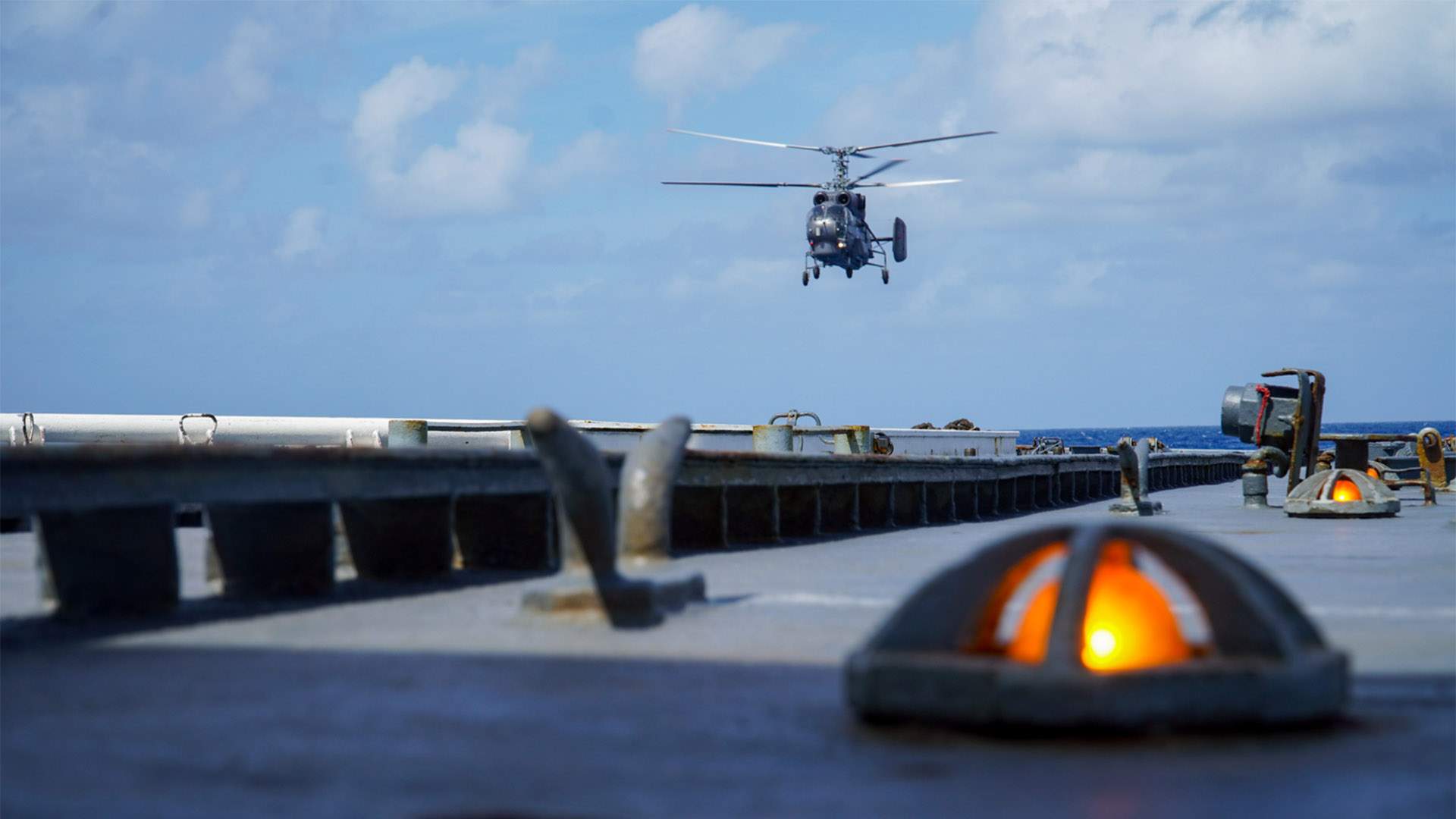Propeller stroke: naval bases were protected by special forces on helicopters

Helicopter search and assault teams have appeared in the Russian Navy. They protect naval bases from attacks by unmanned boats. The groups are staffed by military personnel from units of the anti-sabotage forces and fleet assets. Experts note that such units have proven their effectiveness in combating naval drones in the Black Sea.
Soldiers of the marine special forces
The Russian Navy has created search and assault groups protecting the ships' bases from the air. They include sailors and officers of detachments of anti-sabotage forces and means (SDSS). There are two machine gunners and one safety officer in each group. The main armament is 7.62—caliber machine guns. The experience gained in the fight against unmanned boats (BEC) has shown that such weapons are enough to destroy or at least stop a marine kamikaze, sources in the Russian Defense Ministry told Izvestia.
According to the interlocutors of the publication, the groups operate on Ka-27, Ka-29 and Mi-8 helicopters — they are supposed to meet and destroy backups at distant approaches to naval bases.
The interaction of helicopter pilots and SDSS fighters is currently being actively worked out. Recently, such exercises were held in the Pacific Fleet. According to the scenario, the navy found the back on the distant approaches to the base and informed the search and assault group about it. She moved to a designated area, where she found and destroyed a simulated enemy naval drone.
During the exercises, the SDSS fighters separately practice helicopter shooting skills from hovering and in motion at moving naval targets. Moreover, the shooting is conducted on surface boats, imitating real backups, the interlocutors of the publication noted.
The experience gained by the military sailors on the Black Sea, where they have to resist attacks by Ukrainian ships, is now being scaled across the entire Russian Navy, military expert, Captain I rank Vasily Dandykin told Izvestia.
"Military operations in the Black Sea have shown that helicopters are the best at destroying unmanned boats," he said. — The Black Sea fleet mainly uses Ka-29 and Mi-8, which are in service with naval aviation. The tanks were usually hit by NURS or machine-gun fire from helicopters. Thus, dozens of enemy naval drones were destroyed, and, importantly, this was done at a distance from naval bases and important infrastructure facilities. The enemy has begun to look for a counteraction to such tactics, and is now trying to install man—portable air defense systems (MANPADS) on boats. But the fact that we haven't heard much about backup attacks lately suggests that we've found an effective way to destroy such targets.
Vasily Dandykin believes that patrolling the most important bases of all naval fleets, as well as the Caspian Flotilla, is necessary.
"There is a troubled situation in the world, and provocations can be expected everywhere,— he said.
The FDSS fighters are specially trained military personnel to combat enemy sabotage forces and assets, said military expert Dmitry Boltenkov.
"Basically, of course, they specialize in countering enemy underwater swimmers," he noted. — But at the same time, they can operate in all environments — underwater, on water, on land, and now in the air. It is also important that all major naval bases have their own PDSS detachment — these forces are always at hand.
Now the whole world is closely watching how the "war of backs" is going on in the Black Sea, the expert noted.
"Responsible people are already making conclusions," Dmitry Boltenkov believes. — Moreover, the relevant technologies are actively developing, which means that new challenges await us. The military and political situation in the world is unstable. Therefore, the appearance of backups can be expected not only in the Black Sea, but also in the Far East. But first of all, of course, it is worth paying attention to the Baltic region. The European countries that are members of NATO have no sympathy for us. The territories of Lithuania and Poland are adjacent to the Kaliningrad region. The Baltic states and Finland are very close to Kronstadt and St. Petersburg.
The choice of Ka-27 and Ka-29 helicopters is not accidental, Dmitry Boltenkov noted.
"They have side doors that you can open with machine—gun fire," he said. — The Ka-29 is an amphibious assault vehicle, the Ka—27 has a search and rescue version. They are best suited for hunting for marine unmanned boats.
Anti-robot protection
Earlier, Izvestia wrote that anti-ship protection control points are being created in the naval bases of the Russian Navy. They will be used to control the repulse of attacks by air and sea drones. Twin ZU-23-2 anti-aircraft guns have already been installed along the perimeter of individual naval bases to destroy UAVs and backups.
In addition, air surveillance points with a watch service are equipped on the approaches to them. They should be used to warn of an approaching threat.
The navy is currently paying close attention to the fight against naval drones. Izvestia reported that the Russian Navy's combat training program for surface ships included a new training course on anti—ship protection.
It provides training for ship crews, as well as entire naval formations, to counteract attacks and unmanned aerial vehicles. When developing it, the experience of a special military operation was taken into account.
The program includes exercises such as shooting at small surface and aerial targets. Tasks are also being worked out to protect bases from BEK and UAV attacks.
To combat the new threat, the crews received new weapons — machine guns, anti-drone and pump-action rifles, night vision devices and other special equipment.

Переведено сервисом «Яндекс Переводчик»






